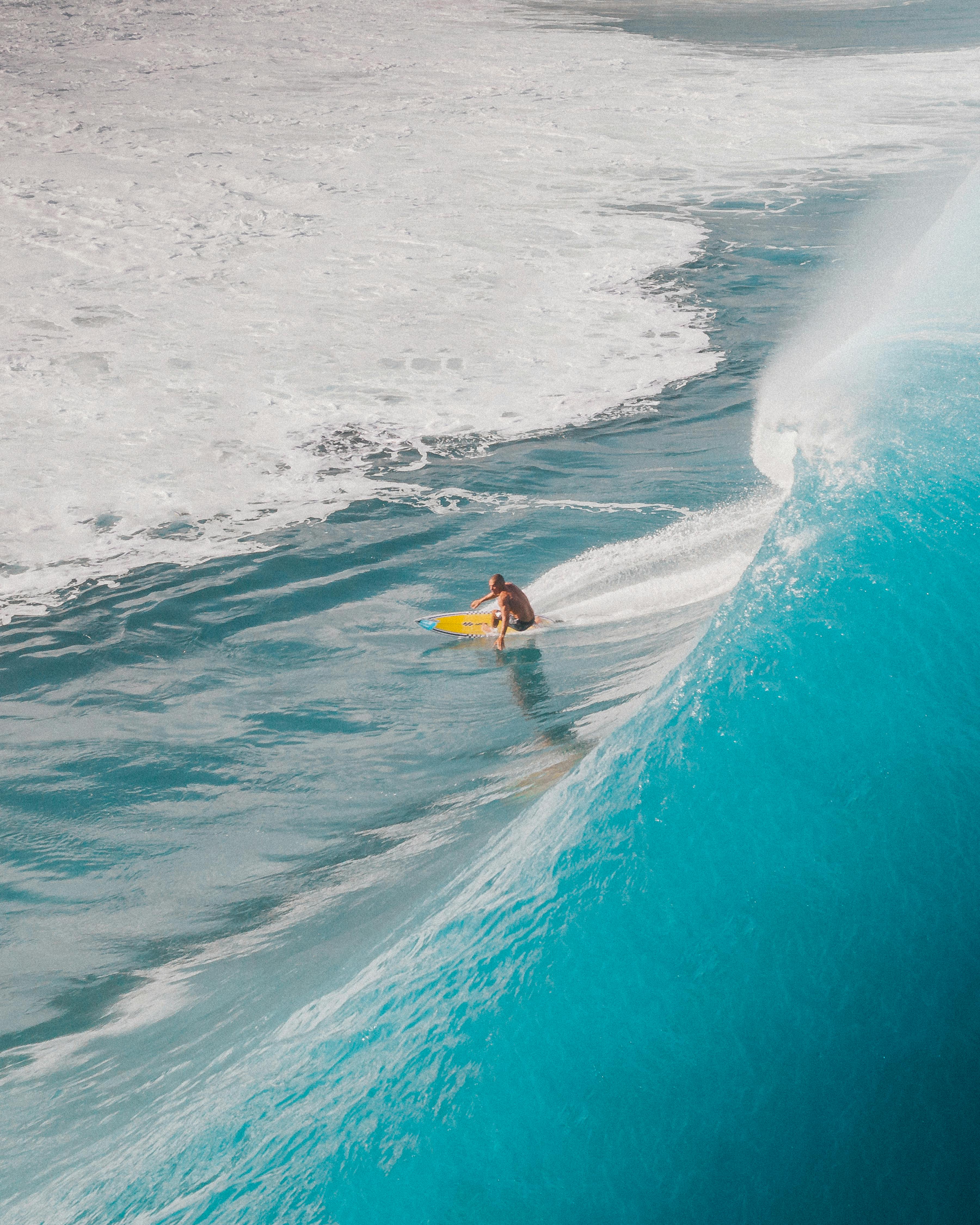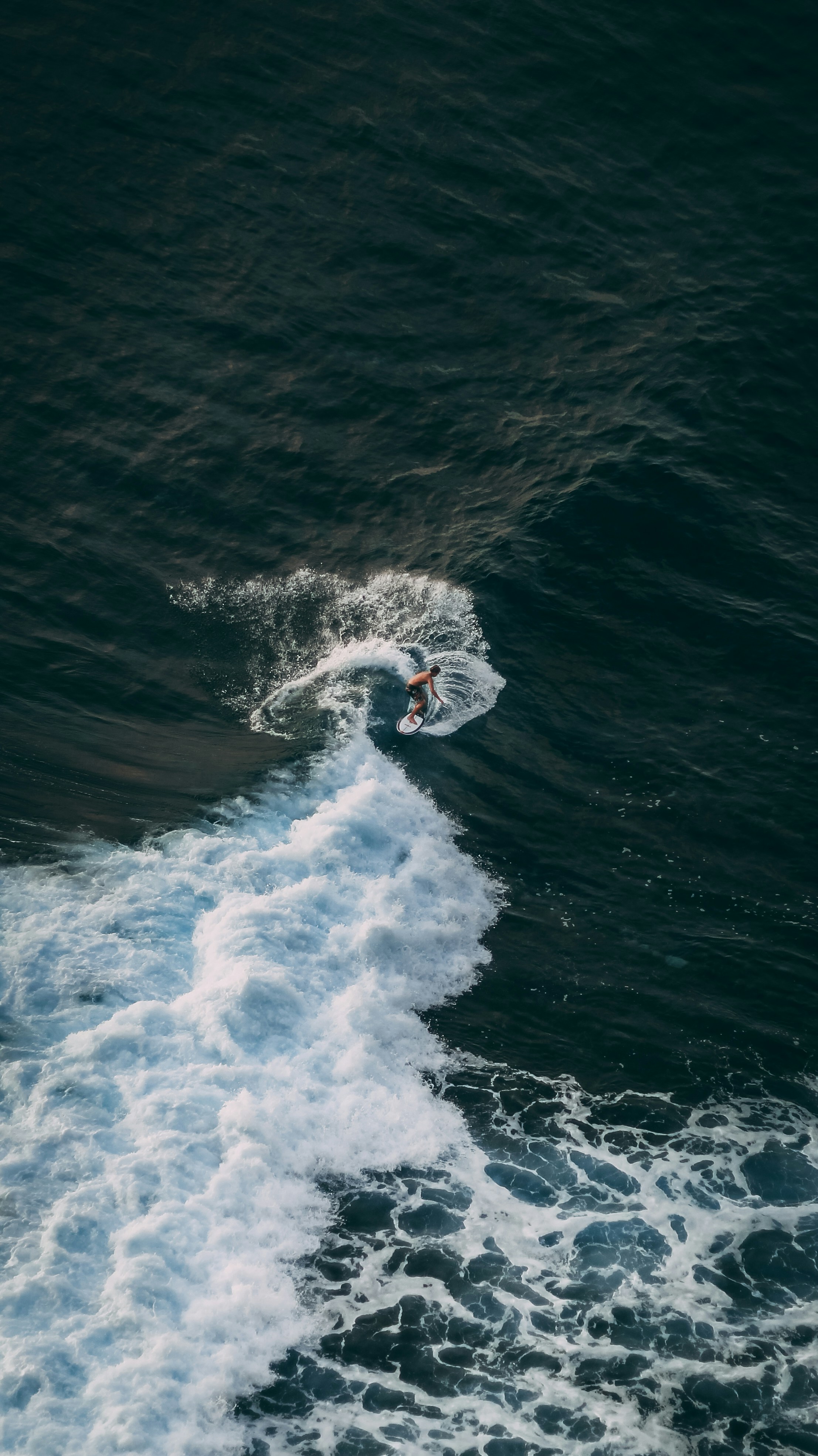Still Surfing Like a Robot? Here's How to Surf Fluidly (Finally)
Some surfers rip – but their style still looks… stiff. Others might not be throwing buckets, but they draw clean, effortless lines that just look better.
That’s fluid surfing – and it’s often the missing link between “competent” and “advanced.”
If you’ve hit a plateau or feel like your turns are jerky, disjointed, or slow, you’re likely stuck in the same trap as most upper intermediates: your surfing has no rhythm.
Let’s fix that.
1. You're Surfing Horizontally, Not Vertically
This is one of the most common signs you’re still in the intermediate phase. You’re making turns, but they track across the wave face rather than climbing and descending with intent. It looks safe – but not impressive.
Most of the time, this comes down to two things:
– You’re aiming for soft parts of the wave, not the steep pocket where vertical turns live
– Your bottom turn lacks rotation or commitment, so you don’t redirect sharply enough
What to do instead:
Target steeper wave sections, and save that final pull or shoulder twist for just before takeoff. That’s what gets you up the face with purpose – and sets up cleaner, sharper turns.
2. You Don’t Finish Your Turns (or Link Them)
Ever feel like you do “something” on the wave, but you’re not sure what it was? That’s often the result of cutting a turn short – or finishing it without drive.
The key technique here is the back leg extension.
It might sound subtle, but it’s huge: extending your back leg through the final part of a turn gives you exit speed, resets your rail, and lets you link into the next maneuver without stalling.
What to do:
– On land or on a surf skate, exaggerate the motion of compressing and then extending
– Focus on finishing the turn with that push – not just starting it
– Watch slow-mo footage of surfers you admire – their turns always end with a confident release
3. Your Bottom Turn Is Letting You Down
Bottom turn = everything. If it’s underpowered or mistimed, your top turn will be too. This is why most intermediates fail to get vertical – they haven’t set it up properly.
A good bottom turn blends:
– Compression and extension (low to high)
– Shoulder rotation (directing the board up the wave)
– Neutral posture held at just the right moment
Without those, you either lose speed or miss your timing completely.
What to do:
– Practice adjusting your bottom turn to the section (not all turns require max speed)
– Use land drills or surf skate reps to ingrain the compression–extension–rotation rhythm
– Watch footage of yourself. Most surfers think they’re turning hard. They’re not.
4. You're Surfing at 110% – All the Time
One of the most overlooked causes of stiff, rushed surfing? Trying too hard.
When every wave becomes a proving ground, you over-muscle your maneuvers. You force movements instead of flowing. Ironically, this “try hard” energy makes you surf worse – not better.
Fix it with a mindset shift:
– Surf at 80–90% effort
– Focus on clean lines, smooth transitions, and holding form
– Try a bigger board (yes, seriously). It forces you to flow with the wave instead of overpowering it
Less effort. More style.
How TRAX Helps You Surf with Flow
Most surfers have no idea what’s actually going wrong in their sessions – they just feel off. TRAX bridges that gap.
It’s a smart sensor that mounts to your board and tracks:
– Your speed through turns
– Your weight shifts and timing
– Where your flow breaks down (like rushed takeoffs or missed transitions)
Then it gives you personalized feedback and training drills – including land-based surf skate progressions – to help you build the body mechanics behind fluid surfing.
It’s like finally seeing what the wave sees – and fixing what’s holding you back.
If you’re done feeling stiff and ready to flow, sign up for TRAX updates here.
Your surfing should feel good – and look even better.
What You Think You're Doing – and What You're Actually Doing – Bad habits feel natural until you look closer.
Fix Your Surf Pop-Up – Your rhythm starts with the first movement — make it count.








